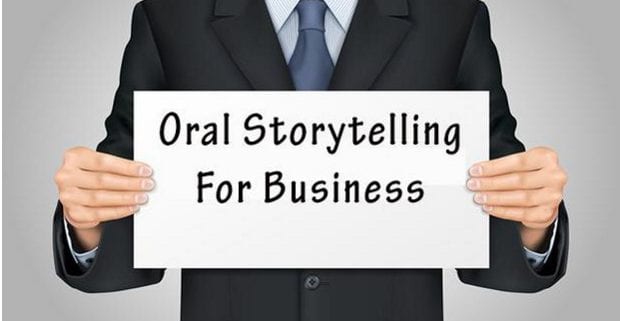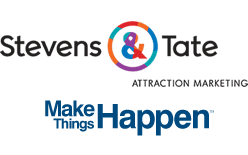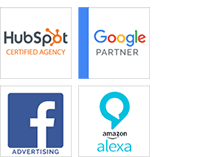
5 Tools For Oral Business Storytelling
Oral stories told in a business context, make up a unique category within the whole storytelling genre. They fall somewhere between the extremes of your basic TV news story and stories delivered by performance artists. Stories told in business settings are necessarily short, conversational, and only work if they make a relevant point.
Nevertheless, business stories do have one thing in common with all other types of oral stories. If appropriately told, they emotionally engage audiences and have a very good chance of being remembered. Think about it. What’s easier to recall from an oral presentation? 3 bullet points or a story about 3 pain points similar to yours? It is for this reason that oral business storytelling can do the heavy lifting when you need people to engage with what your information.
If you’re wanting to learn the basics of business storytelling, there are plenty of resources available to you, including companies like Anecdote that specialize in business storytelling training (full disclosure/shameless plug: I am an Anecdote Storytelling trainer). But, whether you are a trained business storyteller or not, here are some tools and resources that will further your abilities.
1. The Metaphor
I’ve lumped similes and analogies into this category. Each has its own structure, but these three forms of speech have the same purpose. They all provide new information within a known frame of reference. As such, they create mental pictures that foster more involvement than plain descriptions.
“The boardroom turned out to be a heavy artillery of egos” paints a more interesting picture than “the members of the board all had strong egos.”
“His desk was as big as a tennis court,” may be an exaggeration, but it will say something more than “He had a big desk.”
If you’re challenged with coming up with metaphors, there’s plenty of help available. For starters, I recommend two books:
Metaphors Dictionary by Dorris Weiss and Elyse Sommers. It contains 6500 comparative phrases, and a complete bibliography of sources.
The other is The Tall Lady and the Iceberg: The Power of Metaphor to Sell, Persuade & Explain Anything to Anyone. In addition to containing a number of great metaphors that can be used for business storytelling, the author provides a number of techniques that will help you come up with your own unique metaphorical phrases.
2. The “Then, Now and How” Formula.
The “Then, Now and How” formula is something I learned while working with the highly acclaimed speaking coach, Craig Valentine. He writes more about this formula and other storytelling techniques in his bestselling book, World Class Speaking, co-authored by Mitch Meyerson. Here’s the gist of how to apply this formula:
First, talk about the way things used to be. Then, talk about what has changed. Finally, explain how the change came about. Here’s an example:
Then: “We used to have a problem with employee turnover (really embellish the problem by talking about the setbacks and the frustrations this caused).
Now: ” Today, however, we have substantially reduced turnover to _____.”(fill in the blank and embellish).
How: “The reason for this change is all due to the system I want to talk to you about today. ”
This formula has many applications for selling or presenting case histories.
Click here to learn all there is to know about telling your brand’s story.
3. Humorous Dialogue
Too often, speakers try to get audiences to laugh by telling jokes or delivering overly rehearsed one-liners. And they fail. This is because audiences get turned off by speakers who try too hard to make them laugh.
Witness Senator Rubio’s first debate when, during his introductory remarks, he held up a bottle of water while saying that he’s made sure to bring water this time. This was a call-back to the time when a dry-mouthed Rubio embarrassed himself by reaching off camera for water during a nationally televised rebuttal to the State of the Union speech. I’m not sure what was harder to watch, the reach for water or the joke that didn’t get a laugh.
If you’re looking for humor, find it instead within the stories you tell. More specifically, find it within dialogue used to tell a story. Consider this example for instance:
“I started out working for a pretty tough boss. He watched over everything I did and was quick to criticize. One day, he told me that he’d love to stop correcting me. “You have my full permission,” I said.
This may not generate a guffaw, but it’s easier to deliver and will be appreciated more than a canned joke or witticism.
4. Your Story Journal
A relevant business story isn’t something that most of us can come up with spontaneously. For that reason, it’s important to keep a journal of some sort that will trigger stories most appropriate for any given situation. You needn’t write out the whole story. A headline and a one or two-line gist will suffice.
Two sources can help you with this. The first is Evernote. Create a category called “My Stories’ in Evernote and tag each story you add to it with words that help you find them, as needed. You might have a story about a challenge about a weird problem you once encountered, for instance. Simply write a couple sentences that will help jog your memory. Tag them with words that will help you call them up when they are needed – tags like, #weird problem, #unusual challenges, or #creative solutions.
Another source is Day One. Day One is a daily journaling program that also allows you to categorize and tag stories of the days they occur. However, Day One will send you timed notifications with questions like, “What are the best, worse memories from your childhood?” I use this by providing short, taggable answers similar to the way I use Evernote. Additionally, Day One provides a way to diary events, emails, photos or anything else that you’d like to keep track of.
5. The 2+2 Formula.
This is a formula I learned from a Ted talk, entitled, The Clues To A Great Story, given by Pixar’s Andrew Stanton, the creator of Finding Nemo and Wall-E. During this talk, Stanton explains that audiences don’t like to be told that 2+2 equals 4. “We like to figure things out for ourselves,” he goes on to say.
The 2+2 Formula really underscores one of the fundamental reasons we are drawn to stories. It’s why comedians don’t explain the punch lines to their jokes.
Practice using these 5 tools and you’ll add to your ability to capitalize on the power of story as a business tool. For more information, on storytelling training for business, go to http://www.story-lab.net.













